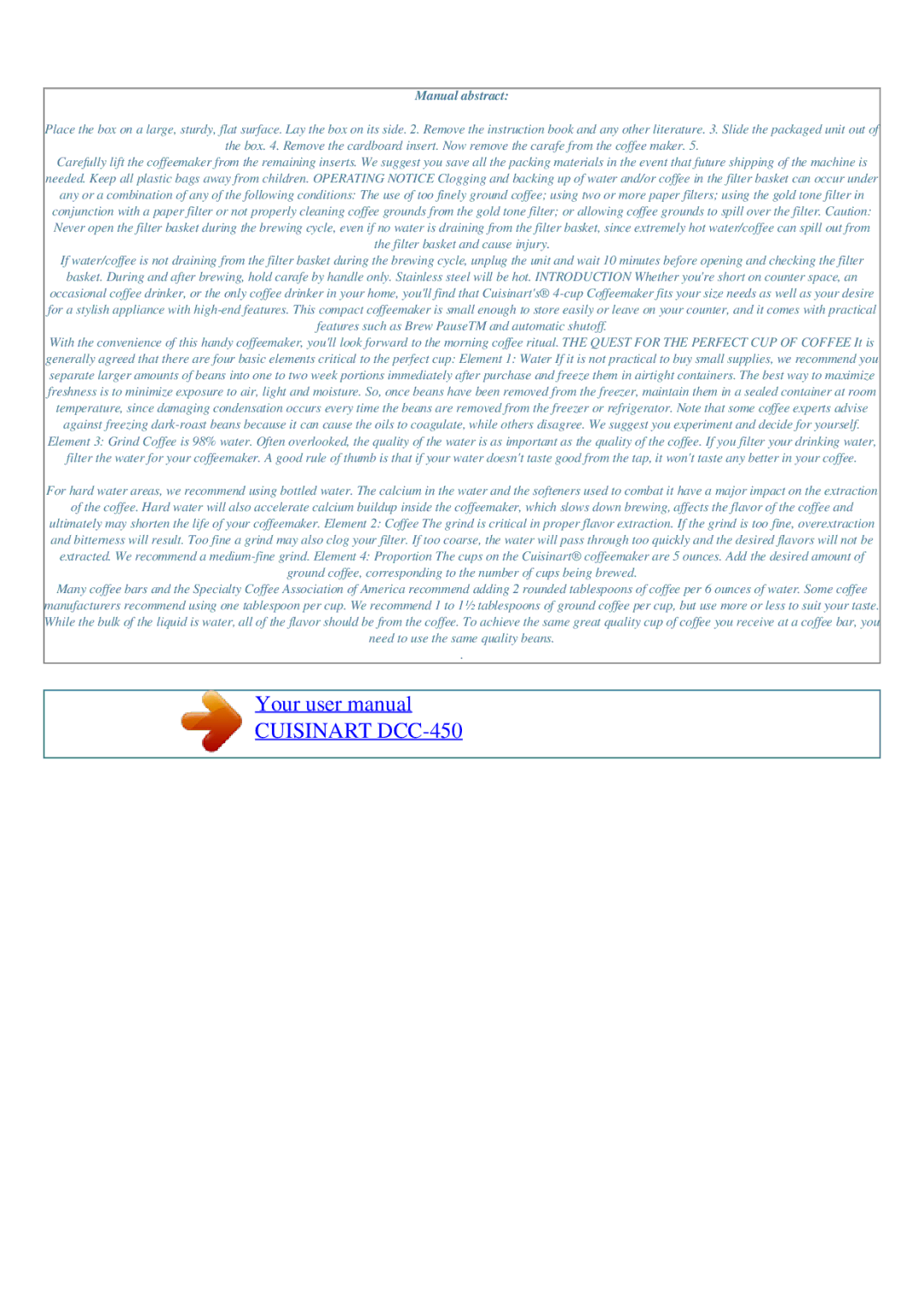DCC-450 specifications
The Cuisinart DCC-450 is a remarkable coffee maker that combines functionality with sleek design, perfect for coffee enthusiasts who appreciate a good brew without the complexity of a high-end machine. This 4-cup coffee maker has become a popular choice in kitchens, thanks to its compact size and user-friendly features that cater to both the casual drinker and the serious connoisseur.One of the standout features of the DCC-450 is its stainless steel carafe, which not only adds a modern touch to your kitchen but also ensures optimal heat retention. The 4-cup capacity is ideal for smaller households or for those who prefer brewing smaller amounts of coffee at a time. The carafe's dripless pour spout allows for mess-free serving, making it a convenient option for busy mornings.
The DCC-450 is equipped with a brew-pause feature that lets you pour a cup of coffee before the entire brewing cycle is complete. This is particularly useful for those who can't wait for the full pot to finish brewing. Additionally, the machine features a classic design, complete with a sleek black and stainless finish that complements any kitchen decor.
Another significant aspect of the Cuisinart DCC-450 is its innovative technology. The coffee maker utilizes a 30-minute automatic shut-off feature, ensuring safety and energy efficiency. This means you can enjoy your coffee without the worry of leaving it on after you've left the house. The machine also boasts a simple toggle switch for brewing, making operation as easy as pressing a button.
Moreover, for coffee lovers who enjoy customizing their brew, the DCC-450 offers the option to adjust the strength of the coffee, accommodating individual tastes. This specificity in brewing makes it an excellent choice for those looking to experiment with different coffee blends and flavors.
Cleaning the Cuisinart DCC-450 is a breeze, as both the carafe and the brewing filter basket are dishwasher safe, making maintenance quick and hassle-free. With its combination of user-friendly features and stylish design, the Cuisinart DCC-450 is an excellent investment for anyone looking to enjoy quality coffee at home. It perfectly balances convenience, safety, and taste, ensuring you start your day off on the right note.

